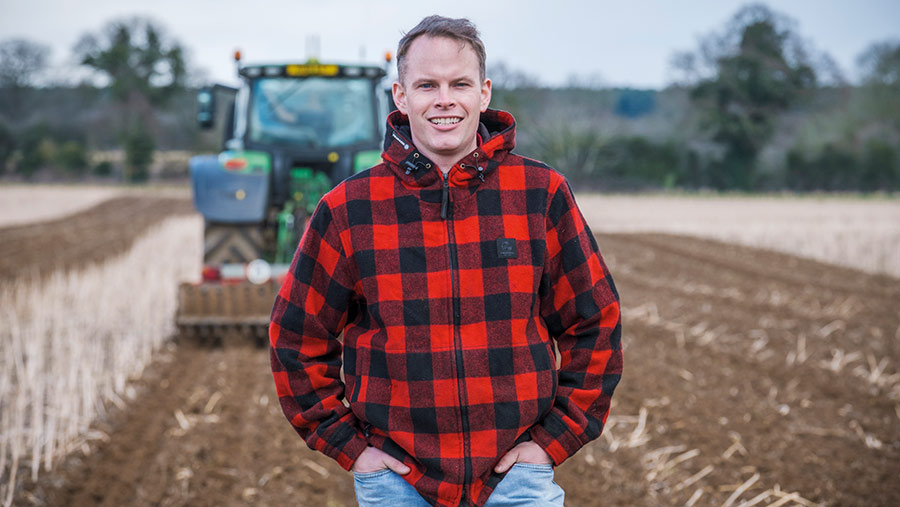Farmer Focus: Direct-drilling impossible after straw chopping
 © Jason Bye
© Jason Bye They say music can alter moods, and the way August has followed a wet July, I’ve needed every upbeat song in my playlist.
It has been a testing season in every sense. Not only did the weather drag things out, but machinery breakdowns, brackled and laid crops and fatigue all tested team morale.
Thankfully, Ben Burgess has kept our wheels turning and our local pub has kept us well fed each evening with hot takeaway meals.
See also: First gen farmers start organic veg business for local supply
We should have finished harvest by the time you read this, although I am writing on a damp August Bank Holiday with 170ha of cereals left to cut and a handful of beans (do they really count?).
Yields have been normal for our patch of stony, drought-prone midwest Norfolk. Depending on each farm’s soil and system (regenerative or semi-conventional), all our wheat crops have achieved 9-9.5t/ha dry over a weighbridge, and 5-7t/ha for malting spring barley.
Milling rye finished up at nearly 9t/ha, with the added benefit of a lot of straw to sell.
I’m very happy with these results, especially as almost all cereal crops are now grown without insecticides, with very limited phosphorus and potassium and reduced nitrogen.
They are also either direct-drilled or have one pass of appropriate tillage. Things are slowly going in the right direction as we take risk and upfront cost out of our system.
I’ve turned my attention to next year’s crops. The next headache is dealing with chopped straw.
We traditionally bale all barley straw and chop wheat straw. This has worked well until this year, as we’d typically direct-drill cover crops following wheat, before planting a spring barley crop.
With unusually large volumes of straw following the combine, our S790i John Deere has struggled to throw the debris its full 12m cutter bar width, making direct-drilling behind it almost impossible.
We’ve resorted to a shallow cultivation to try to get this straw moved and breaking down, and are hastily bolting seeder units to stubble cultivators to get cover crops in.
One benefit of a wet summer is that my July-sown catch crops and early drilled oilseed rape have established well. The spring-sown sugar beet, and even our trial field of sunflowers, also look superb.


